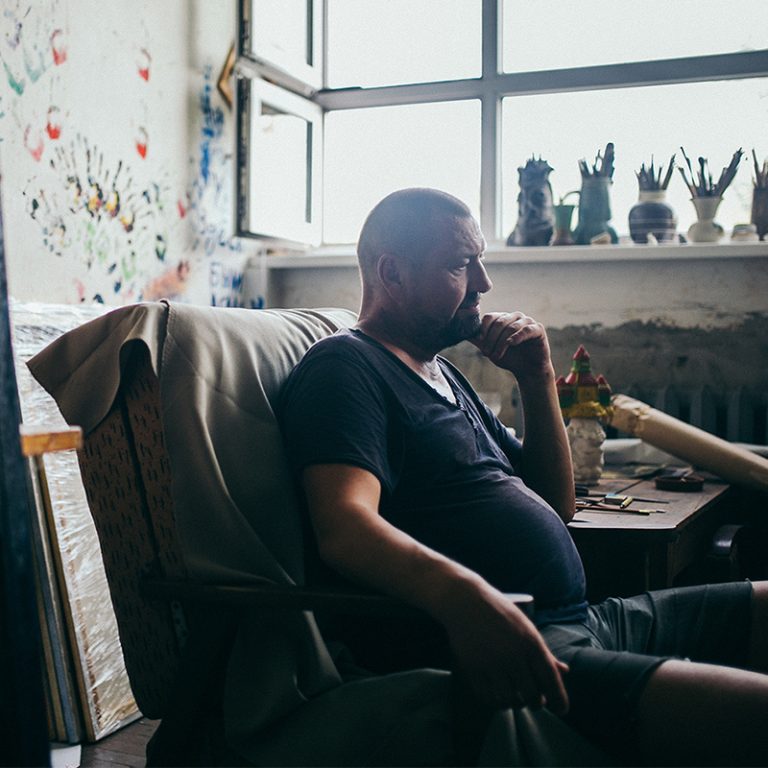Outside the metropolis, contemporary art is more of an exception than a norm. However, the artists behind the Polina Raiko Charitable Fund and the Kherson Museum of Contemporary Art are challenging this notion. In a regular Kherson apartment, Viacheslav Mashnytskyi has established an artistic space and platform for sharing creative ideas. Alongside fellow enthusiasts, he is dedicated to safeguarding and promoting the artistic legacy of Naivist artist Polina Raiko in Oleshky.
Editors’ note
This article was released in 2021. Since then, full-scale war reached the region, Viacheslav Mashnytskyi has gone missing during the Russian occupation of Kherson and Polina Raiko’s house is heavily damaged after Kakhovka dam’s destruction.Avant-garde art has thrived around Kherson for nearly a century, with its history intertwined with creative collectives and the individuals who brought them together. The pioneering figure in this movement was the artist and poet Davyd Burliuk. Originally from the historic Poltava region, often hailed as the father of Russian futurism, he found himself in southern Ukraine in 1898 due to his father’s military service. During that time, he invited numerous friends, including writers Vladimir Mayakovsky, Boris Lavrenyov, Velimir Khlebnikov, Benedikt Livshyts, and artist Mikhail Larionov, to spend vacations in the village of Chornyanka. These gatherings led to the formation of an association known as “Hileia,” which published collections of futuristic poetry, created paintings, and even undertook archaeological excavations (an endeavor pursued by only a limited circle of antiquity enthusiasts at that time – ed.).
In recent years, it would be premature to claim that modern art has become indispensable to Kherson’s public. A study conducted in 2020 by CEDOS, with the support of the Ukrainian Cultural Foundation, examined the leisure activities of the city’s youth. The findings revealed that the cultural events predominantly catered to a mass audience, lacking diversity and failing to provide sufficient platforms for self-expression and engaging artistic experiences that captivate young people. As a result, there is a recognized need for more inclusive and stimulating creative events in Kherson.
Yet, it is challenging to halt the cultural wave. The revival of independent art in the southern part of the Dnipro floodplain commenced in 2002, spearheaded by the village of Chornianka. The “Totem” association played a pivotal role by organizing the first Terra Futura festival, which revolved around the theme of Hileia – the local region believed to have given birth to the Scythians, as documented by Herodotus. Concurrently, the expansive theatre festival “Melpomene of Tavria” gained momentum, showcasing hundreds of performances, including immersive shows set in the forest, over the course of two decades. Furthermore, the territory of the machine-building plant became a vibrant hub for Urban CAD – an open-air art space hosting festivals, exhibitions, film screenings, and various other events.
Another vivid example of modern artistic life in the city was the “Kherson Museum of Contemporary Art”, a project of the Kherson Regional Charitable Fund named after Polina Raiko. So who was Polina?

Naïvistic art
Naïvistic art holds a special place among the diverse array of styles and genres within modern art. The essence of naïvistic art is evident from its name: it is created by artists who lack formal training or expertise, expressing their unique visions through simplistic artistic forms. While naïvistic art has always existed, it experienced renewed flourishing during the 19th and 20th centuries. Notable names among the world’s renowned naïvists include Edward Hicks, Niko Pirosmani, and Henri Rousseau, as well as Ukrainian artists Maria Prymachenko, Kateryna Bilokur, and Nykyfor Drovniak. Polina Raiko, whose actual name was Pelaheya, was one such spontaneous artist. She lived in Oleshky near Kherson in Tavria and discovered her passion for painting at the age of 69. Prior to that, she had never even held a paintbrush in her hands.
Polina’s life took a tragic turn, which unfortunately mirrored the experiences of many women in small towns across the USSR during the latter half of the 20th century. Her husband was an alcoholic, her daughter tragically lost her life in a car accident, and her youngest son fell into drug use and was associated with questionable people. In the twilight of her years, Polina found herself alone in a house on Nyzhnia Street, above the Chaika River, a tributary of Dnipro. Despite her hardships, she persevered and worked hard, using her last bit of money to purchase ordinary paints from a hardware store to continue her painting. Her son, devoid of admiration, continually ridiculed his mother, but Polina had grown indifferent to his mockery by that point.
Polina Raiko’s artistic endeavors knew no bounds. She painted everything she could get her hands on: the walls, the ceiling, the stove, the gate, the fence, the summer kitchen – you name it. The only thing she didn’t manage to paint was the dog kennel. Polina’s undeniable talent could not go unnoticed. Viacheslav Mashnytskyi, an artist and the founder of the Kherson Museum of Contemporary Art, shares his experience of getting to know granny Polina.
– Green tourists stumbled upon the fascinating granny, and I had the pleasure of meeting her through the DidTseBaba Festival. As soon as I arrived and saw her drawings, I realised this was something truly marvellous. Her creations were brilliant, and a friendship blossomed between us. I was so captivated by her talent that I even proposed she paint my bedroom.
For a humble elderly woman, the opportunity to connect with artists brought genuine solace. In the surviving interviews I had with her, it becomes evident how joyous she was to share her ideas with her interlocutors. Viacheslav reminisces:
– “I would visit her and bring paints and paper, allowing her to experiment with different materials. She displayed an unwavering curiosity in everything. That’s how our collaboration began.”
Polina Raiko passed away in the winter of 2004 at the age of 75. Her departure truly reflects the simple and naïve spirit that she managed to preserve despite her circumstances. Her neighbor, Alla Zborovska, recounts:
– “It was a cold January day when Polina left with a serving of ice cream. I asked her, ‘Are you sure you want that?’ She replied, ‘Yes, I just wanted some ice cream.’ She came, enjoyed her treat, and then nobody saw her again. The next morning, when the neighbour went to check on her, Polina was already lying down, lifeless. She never complained about any illnesses or difficulties; she was always cheerful and enjoyed joking with everyone. Humour was a big part of her personality. That was the last time I saw her.”

Every room in Polina Raiko’s house is adorned with frescoes depicting a variety of subjects. She painted everything that captured her attention, from calendars and church icons to wine bottle labels. Her artistic creations brought life and colour to every corner of her home.
Among the various frescoes adorning the walls, there is a Soviet-themed artwork that holds special significance. Polina Raiko had a dream about May 9 (Soviet WWII Victory day,) and she immediately depicted it on the wall. On the opposite wall, there is a painting of a temple. Remarkably, this did not create any internal conflict for her, as her deep-rooted faith in God coexisted harmoniously with her strong connection to the Soviet Union.
One of the notable and cherished works is titled “Road to Paradise.” It portrays a path made of brown cobblestones leading to a Soviet sanatorium. Polina held a deep affection for this artwork and took great pride in it.
However, one of the most haunting paintings hangs above the stove in the living room. It portrays a toothy raven clutching a child in its beak, an allegory for the evil that tragically took away Polina Raiko’s daughter, Olena.

In the same living room, Polina Raiko depicted her wedding, drawing from her wedding photographs. However, the most striking feature of the room is the intricately painted ceiling. Polina would place a table on top of another table, lie down, and spend hours painting the ceiling meticulously. The result was a fantastical display of butterflies, leopards, and crocodiles adorning the ceiling and walls. While these creatures may not have resembled their counterparts in the wild, the artist’s vivid imagination brought them to life in exactly the way she envisioned.
In the realm of modern art in Kherson, Polina Raiko left a far-reaching impact that extended beyond her own house. Indirectly, she managed to foster a community that continues to support local artists to this day.
Following the artist’s passing, Viacheslav recognized the importance of preserving her legacy. He visited Raiko’s house and encountered her grandson, who was carrying a painted fence to use as firewood. Viacheslav recounts:
– “Initially, we purchased multiple artworks from the grandson. Then we requested that he continue living in the house, urging him to observe and not disturb anything. We provided financial support to him for a year until we found a buyer for the property. Concurrently, we set about establishing a foundation – we immediately had this idea, as we wished to honour Polina Raiko’s name.”
Thus, in 2004, the Kherson Regional Charitable Fund was established and named after Polina Raiko. This organization serves as a patron for artists across various disciplines, including visual artists, musicians, and writers.
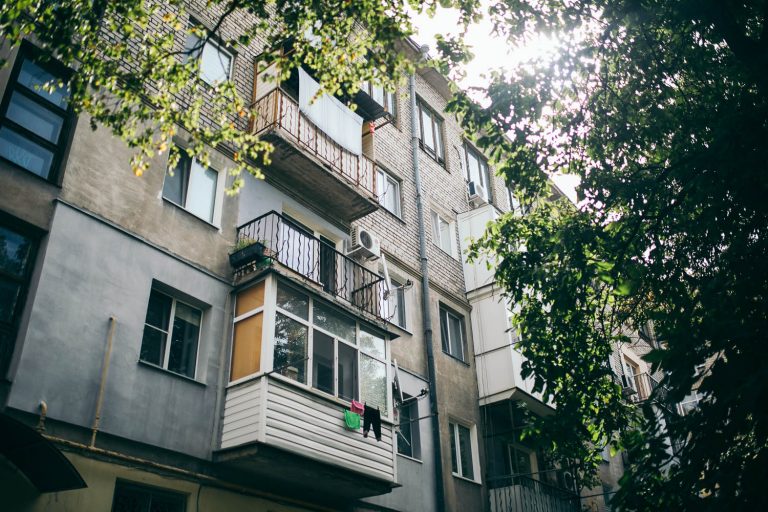
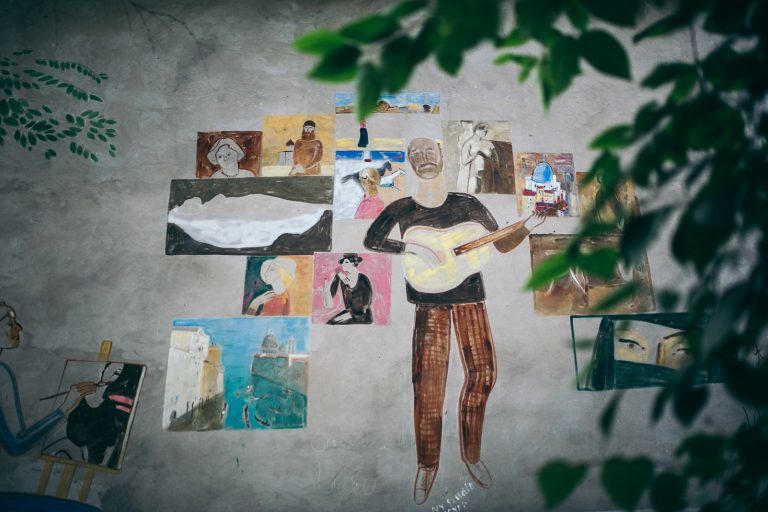
slideshow
Modern art of Kherson
In the heart of Kherson, just a few steps away from Svobody Square, an unassuming 5-story building blends in with the surrounding structures. Only by looking upwards can one recognize the Artist’s House, distinguished by its tall windows that allow ample light to flood the workshops of artists and sculptors on the top floor. While it may appear like any other 1960s Khrushchev-era building, the Artist’s House holds a special significance. Constructed in 1964 through the contributions of artists, it comprises 24 apartments, with workshops occupying the first and top floors.
Today, apartment No. 8 within the building is renowned as the Kherson Museum of Contemporary Art, established by Viacheslav Mashnytskyi in 2004. It is here that Polina Raiko’s sole artwork outside her home is preserved and displayed. The establishment of the Artist’s House was also facilitated by Viacheslav’s father, Valery Mashnytskyi, an artist himself. After leaving Kherson and studying at an art college in Odesa, Viacheslav eventually made his way to Kyiv. However, after 22 years, he returned to Kherson, embarking on a journey of rediscovering the city and its artistic community.
During his time in Kherson, Viacheslav Mashnytskyi forged a friendship with Stanislav Volyazlovskyi, a Ukrainian internationally renowned artist who was later awarded with the Malevych Prize. Volyazlovskyi coined his style as “chanson art,” encompassing a combination of kitsch scenes from a provincial town depicted on textiles such as sheets, pillowcases, tablecloths, and mattresses. He employed appliqué and ballpoint pen techniques to create these works. Additionally, Volyazlovskyi ventured into conventional and video installations, photography, as well as writing stories and poems.
Kitsch
Style of mass culture; low-level art objects.
Together, Viacheslav Mashnytskyi and Stanislav Volyazlovskyi founded the Polina Raiko Charitable Foundation, which eventually grew into the Kherson Museum of Contemporary Art. Mashnytskyi clarifies that the museum was primarily established as a platform to gather creative ideas and people from Kherson rather than solely focusing on preserving masterpieces. He states:
“Every house is a museum, essentially. Every apartment is a museum. That’s why I created a museum to welcome guests – it’s constructive, and it inspires you to live.”
Unfortunately, Volyazlovskyi passed away under unknown circumstances in 2018. Nevertheless, the museum remains open, and his works were exhibited as part of the “Originals” project.
Stanislav Volyazlovskyi and Viacheslav Mashnytskyi, along with the foundation and its supporters, harboured an ambitious vision – to establish a fully-fledged artistic space that would enable Kherson artists to gather and share their creativity. Their efforts have been fruitful, as the foundation not only brings together local artists but also engages with various regional projects.
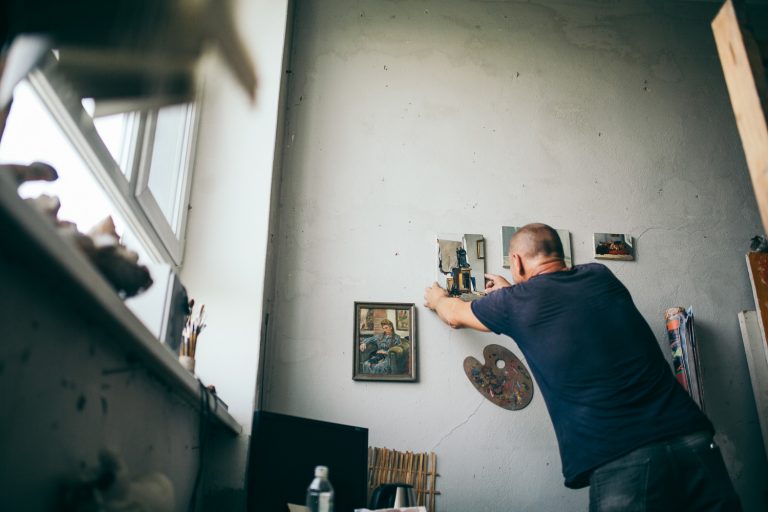
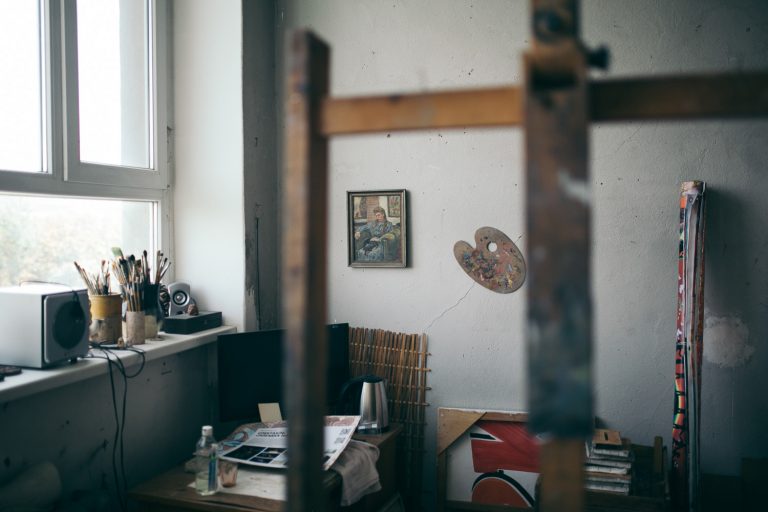
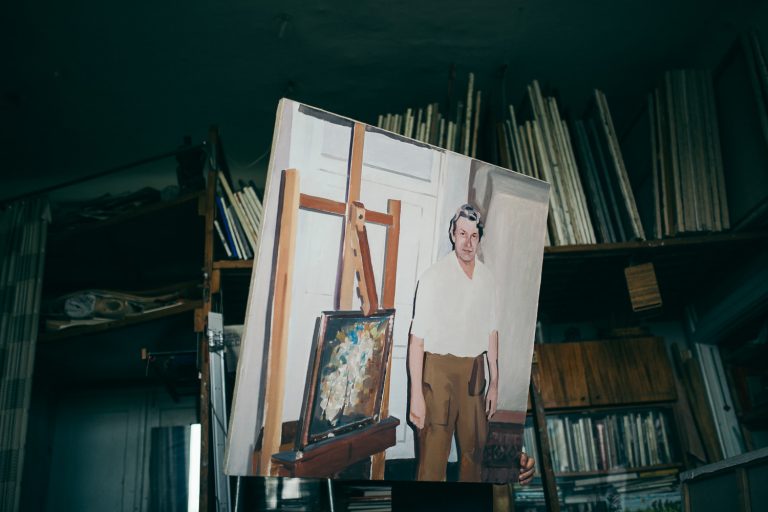
slideshow
One of the notable exhibitions at the Kherson Museum of Contemporary Art is “KHERART” (Kherson art), which was launched in 2013 and featured the works of four artists: Viacheslav Mashnytskyi, Oleksandr Zhukovskyi, Oleksandr Pecherskyi, and Stanislav Volyazlovskyii. The artists proclaimed “KHERART” as a phenomenon when they presented their works. However, the exhibition received a sceptical response from the local people. The art displayed was often provocative and deemed obscene by some, to the extent that the local TV channel censored the name of the exhibition in their coverage. (In Ukrainian, “kher” may have an obscene connotation, ed.)
In 2020, the “KHERART” exhibition showcased the works of 25 artists, including paintings, video graphics, and music. The quarantine period provided an opportunity to gather all the artists, scattered across different cities and countries, and to generate powerful artistic momentum for the Kherson art scene. One notable work from the exhibition was Yulia Logachova’s panel titled “Miropriemstvo” (20 tiles with small sketches). Even the title of the artwork playfully undermined the mixture of Kherson language and people’s desire to go out into the “peace” and present themselves in a pleasing manner.
Mashnytskyi explains that “KHERART” is the perception of the world through the Kherson prism, reflecting everyday life. Due to the local flavour and people’s attitudes, it can be said that Kherson has its own unique perspective on phenomena, including art.
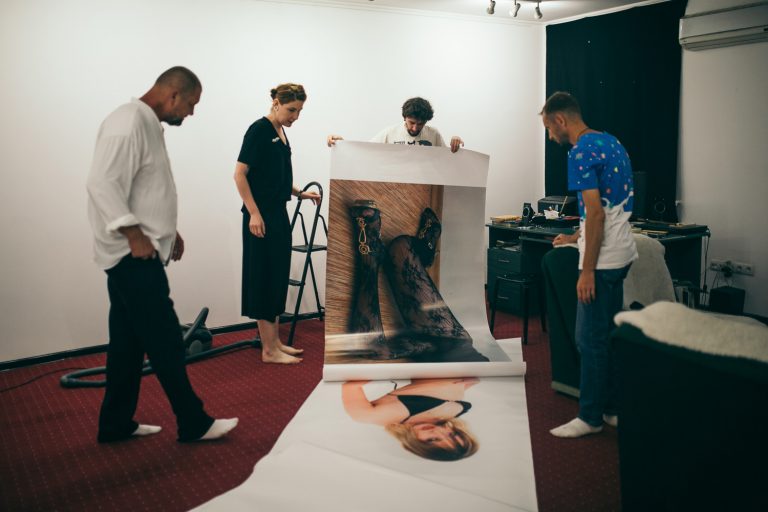
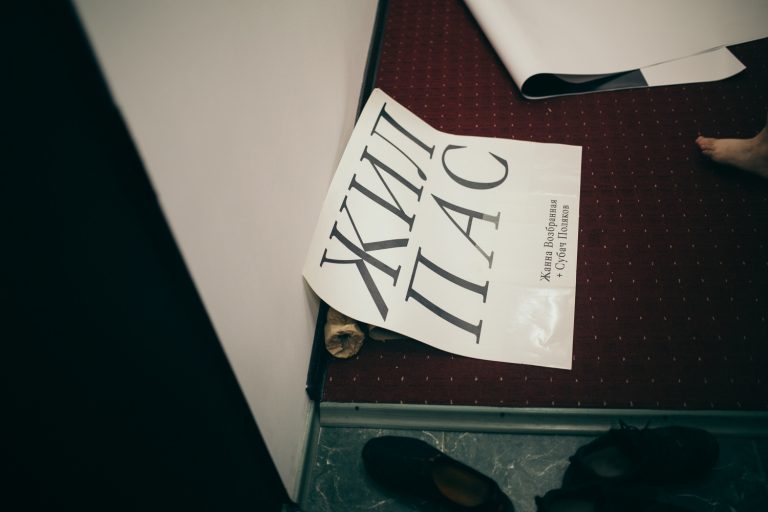
slideshow
“KHERART” has expanded its reach beyond the confines of the small museum and found a place in the exhibition hall of the regional Union of Artists. Another significant exhibition that took place in the museum was “Zhilpas” in September 2020, which was the project of artists Viacheslav Polyakov and Elena Subach. They curated a selection of works by Kherson photographer Zhanna Vozbrana, showcasing photos taken in Kherson from 2005 to 2015 for advertising, wedding agencies, and other purposes, capturing the life of the South as it truly is.
Another notable exhibition was “Abandoned Paintings” in 2016. Mashnytskyi received calls from various locations in the city when people spotted paintings left without owners, such as in garbage dumps, houses after fires, and apartments for sale.
– The fate of any drawing is to be abandoned. This exhibition also emphasizes this nuance, that something is there, and the next moment it disappears. So what? And somewhere, the art survived at least that way. This is also the path of art, and it occupies a certain place in it. It breaks through like a plant through concrete.
Approximately 40 such paintings were collected and exhibited, with the collection continuously growing. However, the museum lacks sufficient space to organize new exhibitions.
The “Abandoned Paintings” exhibition marked Mashnytskyi’s first collaboration with designer Semen Khramtsov, one of the museum’s curators. Khramtsov also noted that the exhibition acquired additional symbolism due to the fact that the wives of almost all the curators had left them in the two years leading up to the organization of the exhibition.
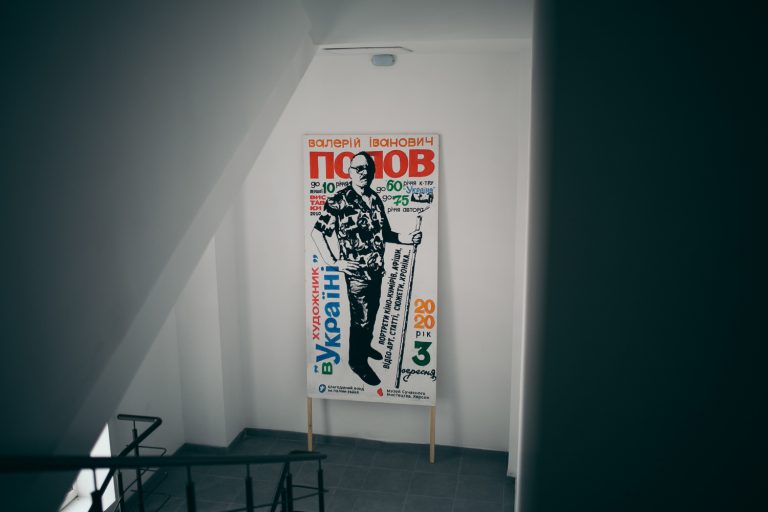
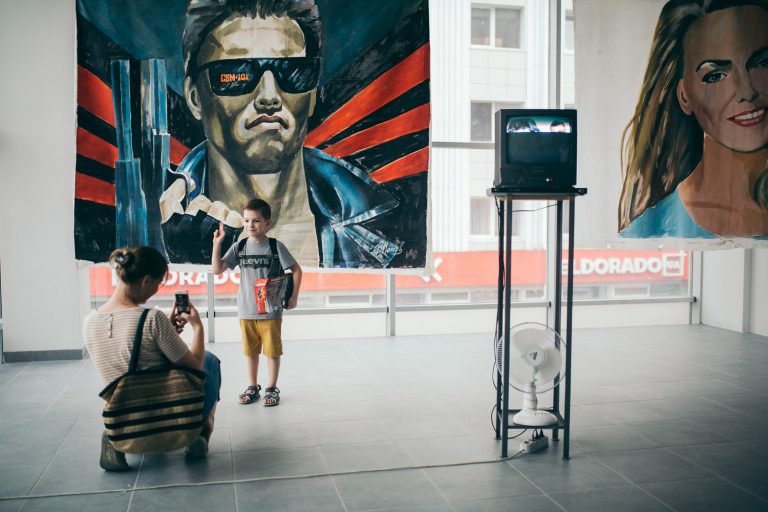
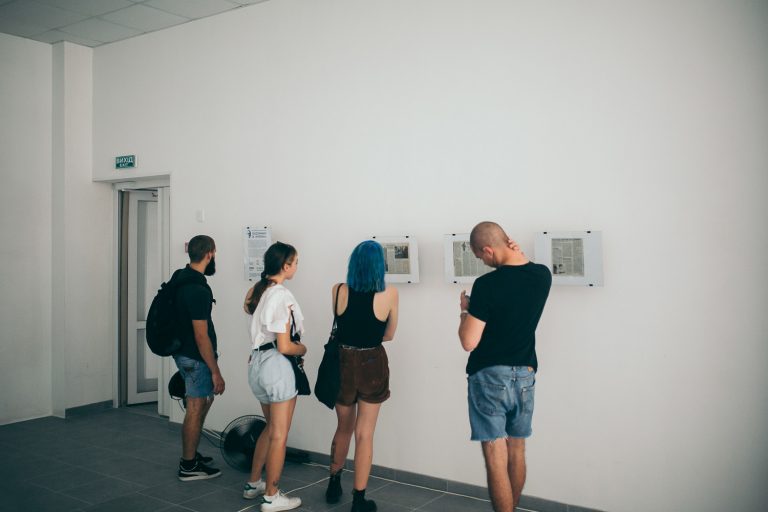
slideshow
Semen Khramtsov’s exhibition, “Artist in “Ukraine,” pays tribute to the memory of Valeriy Popov, an artist who was one of the last to hand-draw poster illustrations for movies shown at the “Ukraine” cinema in Kherson. This cinema, located just a few steps away from the Artist’s House, has been closed for restoration since 2012.
In 2020, the exhibition was repeated, as the first one took place in 2010 during Valeriy Popov’s lifetime. Semen Khramtsov reflects on Valery’s creative personality:
– “Valery was a ‘printer’ – he always drew the same thing. However, when censorship disappeared, he began to interpret these posters in his own way, infusing them with individuality. They became interesting, humorous, and heartfelt – each one different. People started talking about them on the Internet, joking about the posters and creating compilations.”
It was during this exhibition that Semen Khramtsov first became acquainted with the work of the Polina Raiko Charitable Foundation:
– “I realized for the first time that it’s possible to curate exhibitions with diverse artists. It’s like a cultural exploration, and I really enjoyed that. Over the past 10 years, I’ve been researching Kherson and its local culture. It may be small, but it’s really cool.”

To save Polina Raiko’s house
Part of the artistic initiatives in Kherson takes place within Polina Raiko’s house in Oleshky. In 2016, under the curatorship of Olena Afanasieva, the “Polina’s Dreams” event was held. During this week-long event, artists stayed overnight in the house and sketched their dreams or spontaneous ideas.
However, unfortunately, the transformation of the house into a fully-fledged museum has not yet happened. The issue arises from the fact that Polina’s heirs intended to sell the property as a regular plot of land. In the mid-2000s, in order to preserve the house, it had to be sold to a Canadian-Ukrainian couple. Viacheslav Mashnytskyi facilitated the sale agreement with the assistance of fellow artists from Kyiv. However, over time, contact with the owners was lost, and they ceased to pay bills and show interest in the house.
At a certain point, the founders of the Polina Raiko Charitable Foundation realized that the house would eventually deteriorate, so it became crucial to at least preserve a digital memory of it. Through detailed photography and descriptive documentation, the house unexpectedly gained significant public attention, leading to the need for specific projects to be developed.

The primary objective of the Polina Raiko Charitable Foundation is to transform Polina Raiko’s house into a museum and establish necessary administrative and infrastructure facilities in the vicinity, including security, heating, and electricity.
The reputation of Polina Raiko’s house has been spreading throughout Ukraine, prompting the foundation to focus on improving the premises. The first item on their agenda was the installation of a toilet. Semen Khramtsov recalls:
– I hadn’t even thought about it, but I asked Alla Volodymyrivna (the neighbour). She said: ‘Of course, you need a toilet.’ Also, benches and a table because there was nowhere to sit. Tourists have been visiting for 15 years, and they have had no restroom or seating. Now we have a place to sit, have a drink, and use the restroom. We are doing the construction ourselves.
In 2021 the foundation was raising funds for the restoration of the well located in the house’s yard. The well has a unique appearance and differs significantly from the typical wells found in Oleshky. It even has feeding troughs for animals nearby.
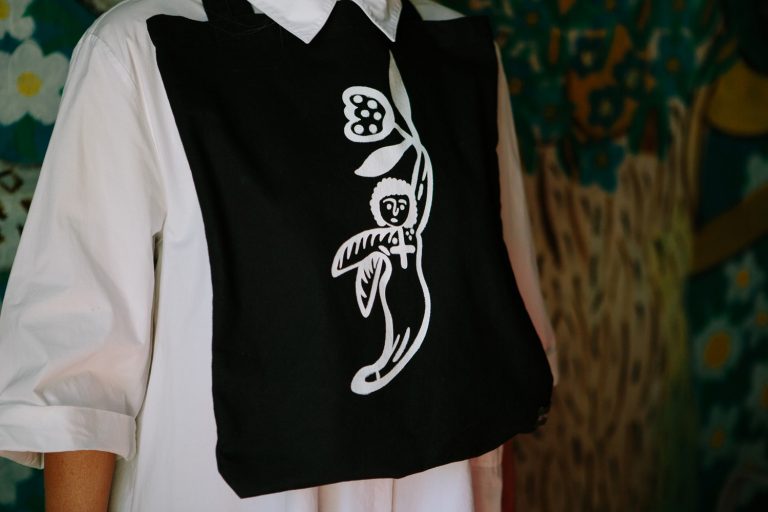
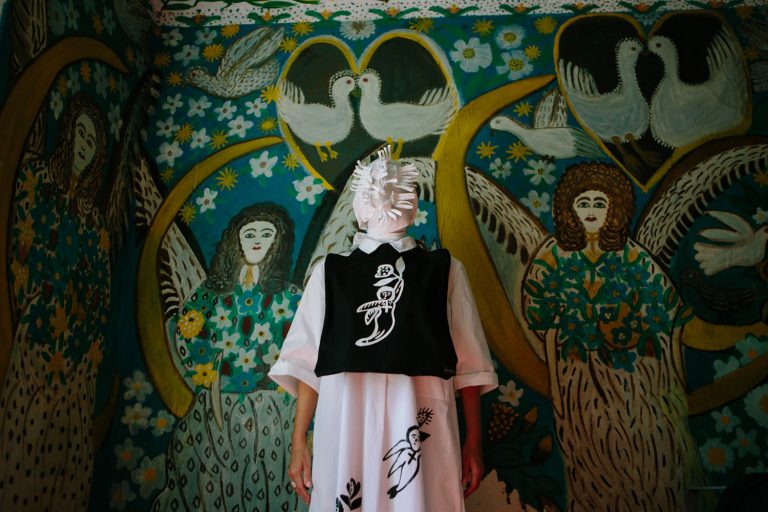
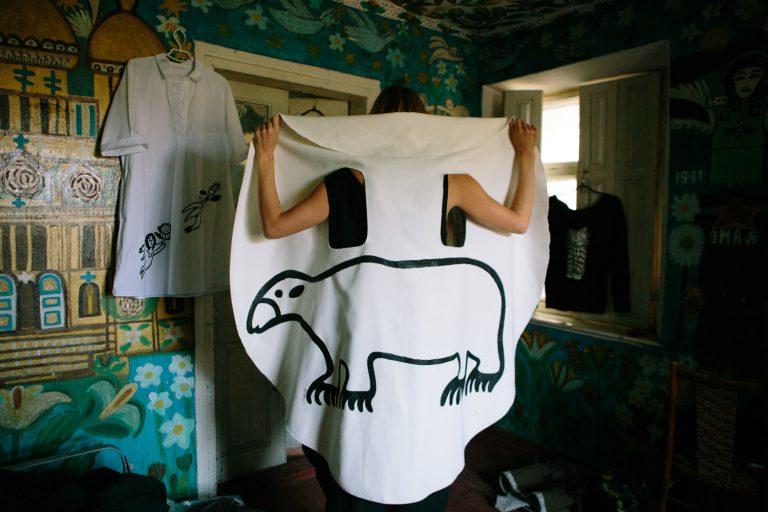
slideshow
To support the fundraising campaign and simultaneously re-imagine the creativity of the primitivist artist, designer Nataliia Ryzhenko has launched a clothing collection called “Ghosts of Polina Raiko.” This project is a collaborative fashion project between Nataliia and the Polina Raiko Foundation. Nataliia has a deep passion for vintage clothing: she collects pieces from renowned fashion houses such as Yves Saint Laurent, Gucci, and Chanel, repairs them, and restyles them for further use. Natalya shares her perspective on things:
– I believe that buying new things and supporting the mass market doesn’t make much sense when there are numerous masterpieces created by true geniuses. Why not seek out and restore them? Personally, I find great pleasure in it. The process of refurbishment and reuse is my passion.

A few years ago, Nataliia met Viacheslav Mashnytskyi and Semen Khramtsov, and their shared ambition to restore the house of the Naivist artist left a profound impact on her. However, it was the house itself that left an even greater impression:
– When I arrived, I was amazed. It was something incredibly unique, and simply making t-shirts with little birds or featuring Polina Raiko seemed uninteresting to me. I started contemplating and approached the guys with the idea of creating a fashion collection.
Nataliia’s collection was influenced by figures such as Polina Raiko, and Japanese fashion designers Yoji Yamamoto and Reiko Wakuba. The designer describes their work as “avant-garde destructiveness.”
Once the concept for the collection took shape, Semen Khramtsov created stencils to apply prints featuring specific images of Polina Raiko onto the clothing pieces in Nataliia’s collection. These images included fish, owls, cats, and birds – all sources of inspiration and significant elements in Polina Raiko’s life.

The title “Ghosts of Polina Raiko” evokes the imagery of black and white ghosts, contrasting with the initial impression of Polina’s brightness and vibrancy. Her life was marked by tragedy, which is reflected in the collection. One example is the image of a bear on a dress:
– She found inspiration in everything she saw: she would go to the river or glance at magazines that came her way. The bear, for instance, was just a sticker on Arctic mineral water. She chose to immortalise it because she perceived it as something incredibly beautiful.
The essence of being true to oneself continues attracting those searching for meaning to Polina Raiko’s house. The foundation is named after her works to ensure that this spring of inspiration is preserved for as long as possible. Without the status of a museum, more and more frescoes are being destroyed each year due to fluctuations in temperature and humidity. At the same time, the foundation brings together diverse artists and creates a much-desired cultural platform for them.

